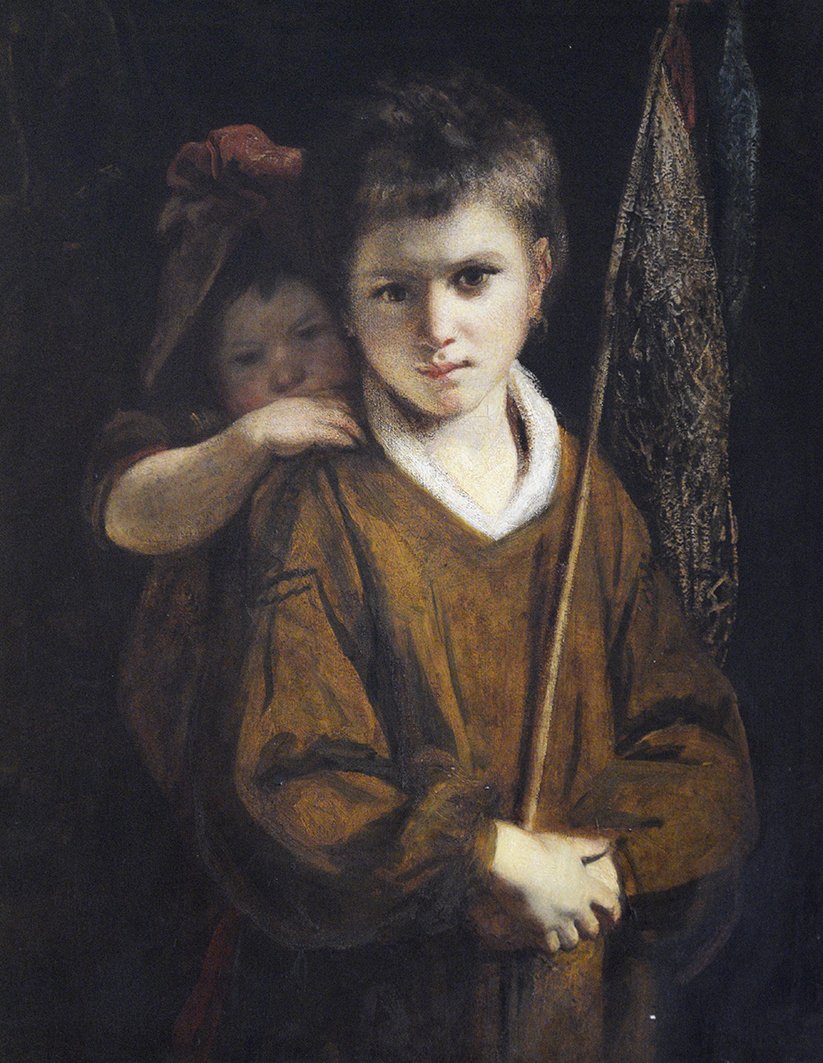
A Beggar Boy and His Sister
c 1775
A Beggar Boy and His Sister
Collection Details
Bought by the 3rd Duke of Dorset, probably in 1775. An entry for this year in the Duke’s account book, preserved at Knole, records the purchase of Begger Boys Sir J. Reynolds £52.10 (bought in London but hanging at Knole). The dates in this account book are not always reliable, but while there is no mention of the picture in a list of the pictures at Knole (published in the Ambulator, 1774, pp. 113ff), an entry for Beggar Boys appears in the Tunbridge Wells Guide of 1780. Thence by family descent to Lord Sackville, from whom bought by Agnew in 1894; in 1895 acquired by Alexander Henderson, later 1st Lord Faringdon.
Literature Details
E Hamilton, Engraved Works of Reynolds, 1884, p.143; Graves and Cronin, Reynolds, 1899–1901, iii, pp.1116, 1135; Sir W Armstrong, Reynolds, 1900, p.238; E K Waterhouse, Reynolds, 1941, p.65; idem, Painting in Britain, 1953, p.169, pl.128; exh cat, Reynolds, RA, 1986, pp.264–5.
Exhibition Details
probably RA, 1775, No. 238; BI, 1813, No. 5; 1823, No. 4; 1840, No. 117; RA, Winter, 1896, No. 27; Arts Council, Reynolds, 1949, No. 14; Birmingham Art Gallery, Reynolds, 1961, No. 68.
Engraved:
S.W. Reynolds; C. H. Hodges, 1803; C. Hardy, 1803.
Related Picture:
A version was included in the Ehrich sale, New York, 18–19 April 1934; also see below.
Background:
The acceptance of this painting as the exhibited work of 1775 presupposes the existence of a second and later picture which appears to contain the same components (Reynolds’ notebooks recording sitters’ appointments are missing for 1774 and 1775) since a number of sittings are listed throughout 1777 for Net Boy, Boy Net, Boy Shepherd, Boy, Boy and Girl and Children, any of which might refer to this composition. Provided that the Duke of Dorset’s description of the picture as Begger Boys [sic] can be accepted, the entry in the account book for 1775 should provide evidence that it was the exhibited picture that went to Knole. It was shown at the Royal Academy with the title of A Beggar Boy and his Sister, and in subsequent exhibitions as A Boy with Cabbage Nets. Graves and Cronin list pictures of 1775 (p. 1135, Beggar Boy and Sister) and 1777 (p. 1116, Boy with Cabbage Nets), which, it is suggested, may be one and the same. The authors are presumably mistaken in stating that the former was paid for before 1775 by the Duke of Dorset and the latter in 1772 (50 gns, Beggar Boy and Child), also by the Duke. Horace Walpole noted in his catalogue of the 1775 exhibition: ‘One of his best works; strongly coloured’. Waterhouse (1953) drew attention to the Rembrandtesque lighting and referred to it as a precursor of the early style of Opie, and, verbally, suggested that the composition might have been taken from a north Italian original (for example, an artist such as Dosso).
The Trustees of the Faringdon Collection 26.
All rights reserved.
